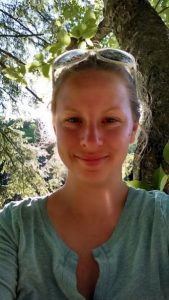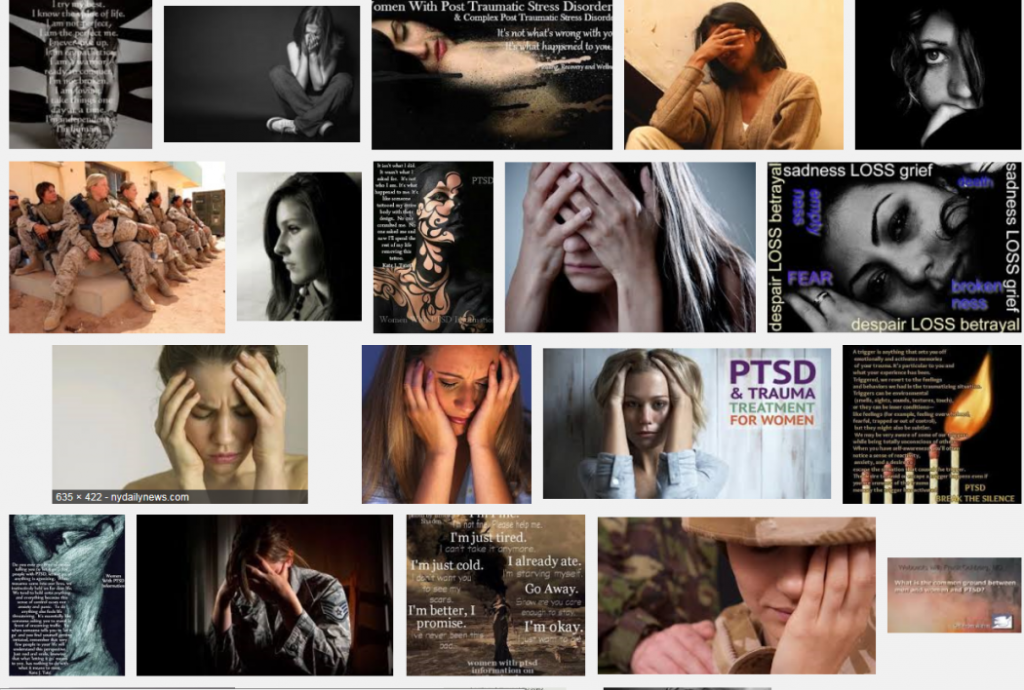Originally published on W.T.F. on May 4, 2016 By Dawn Daum.
Sometimes all it takes for a person who is suffering to reach out for help is to see the face of someone they can identify with. By doing something you already do, nearly every day, you can help make that happen. Let me explain.
Right now, if a person uses an online search engine (Google, Bing) to search “PTSD”, he or she will be directed, almost exclusively, to sites offering information on veterans of war. An image search will lead you to believe only men in uniform get Post Traumatic Stress Disorder (PTSD).
What’s troubling is that if that person searching is not a veteran – instead a survivor of a different kind of trauma – and is looking for information and a face to identify with, she is possibly left feeling even more isolated and defeated.
If “women and PTSD” is searched, one is left believing a female with PTSD is in a constant state of falling apart.
That is another misrepresentation. Those who suffer with PTSD usually do so while raising children, working 9 to 5 and/or taking care of necessary day to day tasks.
Survivors are professionals at looking “normal” on the outside.
People that suspect they may be experiencing PTSD, who go searching for faces and information to identify with need to see images that look like PTSD in the real world – faces of moms, dads, children, teachers, social workers, cashier, nurses, etc. They need to see the real #FacesOfPTSD. Faces that look like mine. #BeReal
What is the #FacesOfPTSD campaign?
#FacesOfPTSD is a social media campaign kicking off on Friday, May 6, 2016.
Survivors who identify as having PTSD will flood social media with photos of themselves, along with the tagline, “Not all wars take place on the battlefield,” and the hashtag #FacesOfPTSD.
Why the #FacesOfPTSD campaign?
There is a common misconception in our culture about who suffers from PTSD and what it looks like. Not all wars take place on the battle field.
How can you make a difference?
- “Attend” and share the #FacesOfPTSD event scheduled for Friday, May 6th.
- On May 6th, share an image of yourself—or if you don’t live with PTSD but still want to show support, share any of the images associated with this campaign (feel free to share images directly from the event page). Be sure to include the hashtag #FacesOfPTSD.
- Use appropriate images if you publish a blog post or articles about PTSD.
- Know the facts. Women get PTSD twice as often as men. Children get PTSD. Men and women in the military get PTSD.
Our goal!
To alter the current landscape of social media and search engines (Google, Bing) to include all trauma survivors, particularly women who are rarely represented, in order to reflect more accurately the #FacesOfPTSD.
If only one of these images ends up on the first page of search engines, then this will have been a success!!
It’s important to accurately represent the thousands of women and men living day to day, while doing the best they can to manage flashbacks, constant triggers and the debilitating medical and mental health effects of this disorder. It’s time to recognize the many #FacesOfPTSD.
This campaign is a joint initiative of:
Dawn Daum and Joyelle Brandt of Trigger Points Anthology
Contact: triggerpointsanthology@gmail.com
Christine “Cissy” White of Heal Write Now / How to Live On Earth When You Were Raised in Hell
Contact: cissy_white@Comcast.net
Arwen Faulkner of Lilacs in October
Jodie Ortega https://www.youtube.com/watch?v=J2xYSYLPuy4









